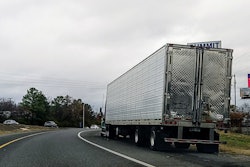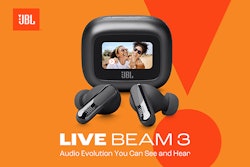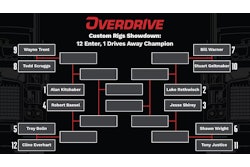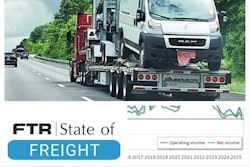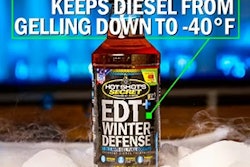The law does not require physical damage insurance, but lenders do. A damage policy will pay no more than the value of the equipment at the time of the accident. In other words, you won’t get a new truck out of a damage claim, even if your present truck is totaled. The insurer’s preference always is to go the cheapest route, which usually is repairing the truck you have. At best, you’ll get enough to buy another truck of the same age and mileage.
A typical damage premium is anywhere from 3% to 5% of the truck value, or $3,000 to $5,000 for a truck worth $100,000. A bad driving record, however, can bump the cost to 8% a year or more -- if you still can get damage insurance at all. If you buy damage insurance from a truck dealer financing your truck, your truck payments are higher, and your interest costs go up. It may be less expensive to get insurance through an independent agent.
Make sure that damage policies don’t count the cost of towing as part of a settlement. If they do, thousands of dollars of any settlement will go not to repairs but to the tow company, particularly given the rise in egregious, some say "predatory," practices in billing and other areas by tow companies. You’re probably better off getting extra coverage for towing written into the policy.

Key damage-insurance considerations
Market value. Use available tools to obtain a clear sense of the market value of your truck and work with your insurer or insurance agent to reflect that in your policy. Overdrive sister Fusable company Price Digests' tracking of market value is one reliable source. A single vehicle valuation look-up there is available for less than $40. As your truck ages and becomes less valuable, updates to the policy will save you money on premiums.
[Related: Ways to assess truck market value for purchase, trade or sale, insurance]
Gap insurance. Since an owner-operator can owe more on a truck than it’s actually worth due to depreciation, a damage settlement may not be enough to make the rest of the payments on the rig if it's totaled. If you’re driving a new truck or a used truck not more than five or six years old, gap insurance might be helpful. It covers the difference between the actual book value of the truck and what you owe on the truck.
If the market value of your truck is $60,000, but you have a loan balance of $70,000, you would be short $10,000 to pay off the loan in the event your truck was totaled. Gap coverage would make up the $10,000 shortfall.
Damage deductibles. Besides the premium, the other important number in a damage formula is the deductible. A deductible of $1,000 means the policyholder agrees to pay the first $1,000 of expenses before the insurance kicks in.
Ask your agent for a range of prices at various deductibles. Deductibles of $1,000 are typical.
A top-of-the-line rig may have deductible options as high as $10,000. Low to moderate deductibles, however, are the best choices for an owner-operator. A high deductible is no bargain if an accident puts you out of business. If the deductible in your fleet policy is too high for comfort, you can buy insurance that will pay that deductible for you. Such “deductible buyback” insurance generally is cheap.
Coverage of other equipment. Any truck equipment not covered in a basic damage policy -- such as auxiliary power units, tarps, binders and chains -- can typically be added at minimal cost. A basic damage policy likely won’t cover the cost of replacing a tank full of diesel that spills in an accident, or any other fluids that need replacing afterward. Boilerplate damage policies typically cover only permanent manufacturer-installed fixtures on the truck, not extras such as satellite radio or chrome.
Other key insurance coverages
CARGO INSURANCE. The federal government ended its requirement for $5,000 in cargo coverage for interstate carriers in 2011, but shippers continue to require it of carriers hauling their freight. Fleets typically buy $100,000 on the owner-operator’s behalf, which is the amount mandated by many shippers. Specialty haulers can carry far more, likewise independents contracting with the Department of Defense and/or the Federal Emergency Management Agency for loads.
The fine print in some lease agreements, furthermore, may charge the owner-operator for any cargo losses if he’s at fault in an accident, cargo insurance or no cargo insurance. Some loads have a higher value than an owner-operator’s cargo insurance can cover. Yet owner-operators often don’t know who’s liable for the difference if an expensive load is lost. See what your policy covers before an emergency occurs.
NON-TRUCKING-USE LIABILITY INSURANCE. The name of this insurance is a more precise term for what used to be (and sometimes still is, informally) called “bobtail insurance.” Some trucking companies see bobtail insurance as a method to attempt to insulate themselves from lawsuits when owner-operators who are leased to them operate their trucks while on their own personal time. Or, put another way, not under dispatch.
The meaning of “under dispatch” sometimes has to be determined in courtrooms. Courts have held that even a bobtail trip home can be considered under dispatch, since the route is determined by where the fleet most recently sent the driver. Generally speaking, though, if an owner-operator causes damage to someone or someone’s property for which they are liable, non-trucking liability insurance is what pays those damages and claims. In other words, the owner-operator has been in an accident while not under the control of the trucking company they are leased to, and they’re at fault. Non-trucking-use liability coverage is required by the majority of carrier leases. The cost is typically $50 or more per month.
UNINSURED/UNDERINSURED MOTORIST INSURANCE. When you complete an insurance application either physically, electronically or over the phone with an agent, eventually you must choose your Uninsured Motorist/Underinsured Motorist (UM/UIM) coverage amounts.
While many owner-operators try to save where they can on insurance, this isn’t the coverage to do it with. UM/UIM is the one coverage you should never decline or only purchase the minimum available.
UM/UIM is never fully appreciated until it’s needed. Frequently though, because the insured desires to save money, they either request and purchase the minimum amount of coverage or decline the coverage altogether. Tragically, this money-saving decision can prove to be financially devastating when the worst happens. Most everyone knows and understands what Uninsured Motorist coverage is -- it pays your medical expenses, up to the limits of coverage, when you are in an accident and the other driver is at fault (liable) but has no insurance.
However, what’s typically not understood by most insureds is Underinsured Motorist coverage -- this coverage also pays medical expenses, up to the limits of your coverage, when the other party in the crash is liable but doesn’t have enough liability insurance to pay all of the bodily injury expenses for which they are liable.
Read next: Other ways to save on trucking insurance




